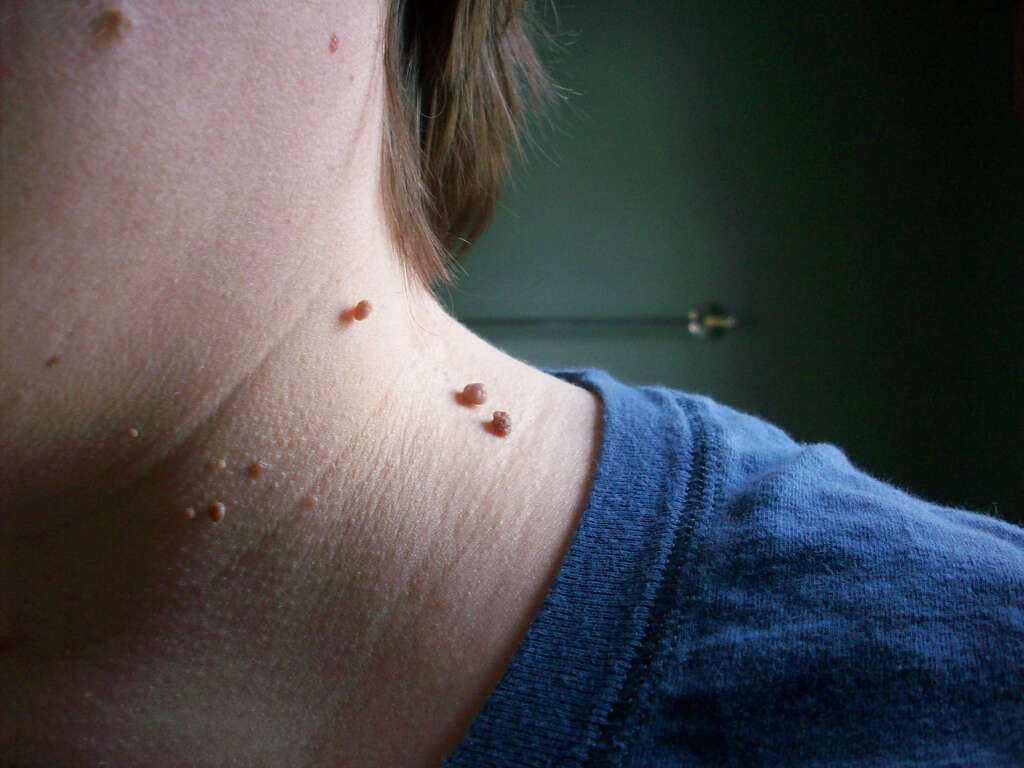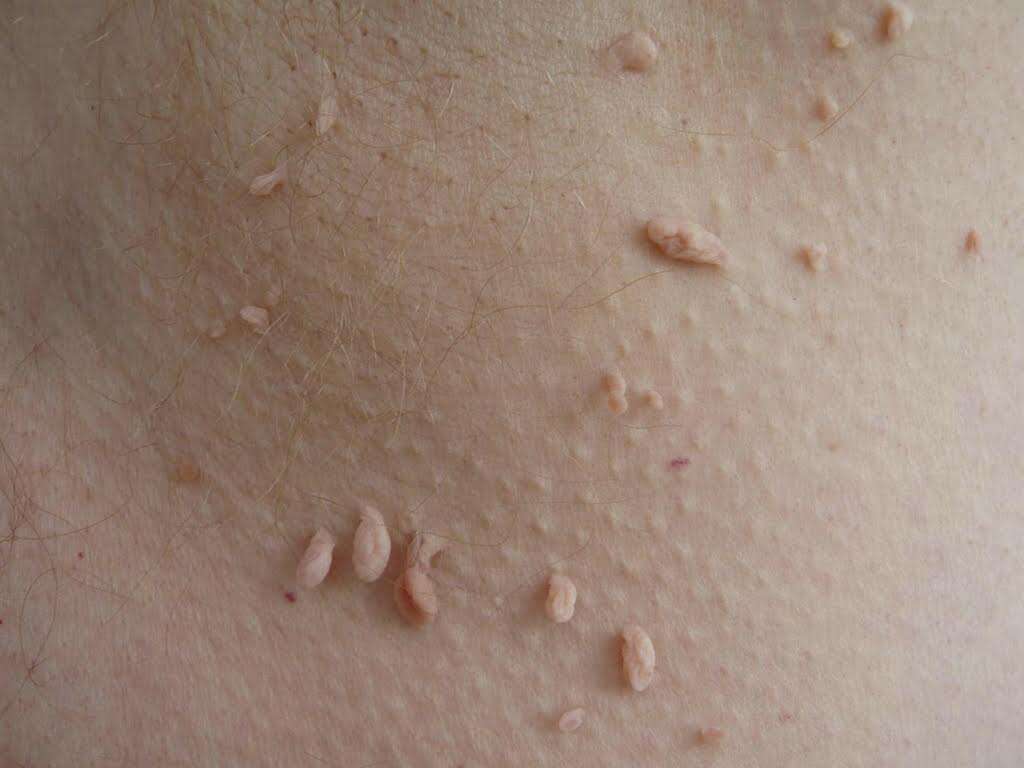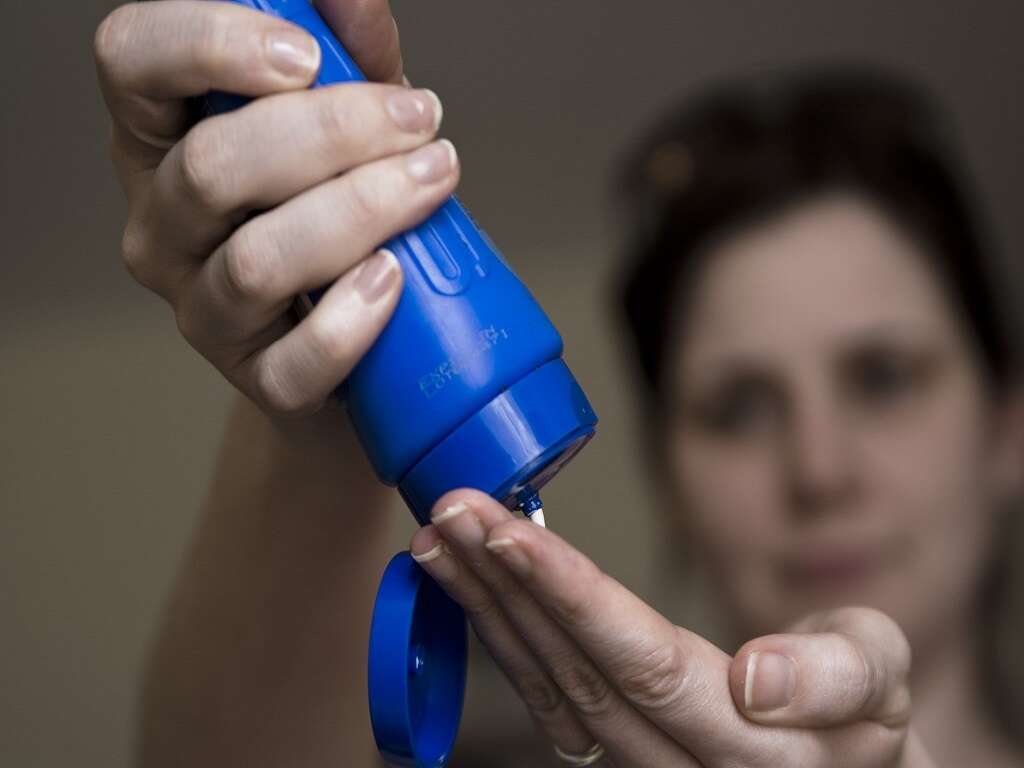10 Causes of Skin Tags
You may not have ever had skin tags, but you probably know what they are. They can be considered unappealing and can get in the way of doing certain activities. Further, they can require special treatment if you want to avoid damaging them.
Skin tags are similar in appearance to moles and are generally harmless, except for those who worry about the aesthetic appearance of them. Moles, on the other hand, can contribute to cancer if they are removed in a dangerous manner.
Skin tags can be removed quite easily. All you need is a bit of freezing and you can cut them right off the skin. However, the best way to avoid having to do that is to just avoid getting skin tags in the first place. If you don’t want to develop some skin tags, then it’s probably a good idea to be aware of the conditions that can cause them to arise.

Cause #1: Human Papillomavirus
Human Papillomavirus, also known as HPV, is one of the most common and widely spread STDs. It’s also the most common cause of skin tags. In fact, in a test performed on people suffering from HPV nearly 70% of them had skin tags as well.
HPV is not deadly but unfortunately it can be very difficult to detect. For this reason, many people go years without realizing they have the condition. One of the earliest indicators of HPV is the development of skin tags. For that reason, when you’re having a skin tag removed you should have it checked for HPV.

Cause #2: Diabetes
One of the many complications that can arise from diabetes is skin tags. Diabetes is generally a lot easier to recognize than HPV so if you have already been diagnosed with diabetes and you start to see skin tags, you shouldn’t be terribly surprised.
On the other hand, people who aren’t sure that they have diabetes may receive their first clue by the development of skin tags. This is because diabetes causes a person’s hormones to fall out of balance and their blood sugar levels to become impaired. When the hormones that are responsible for the healthy growth of skin cells become unbalanced, skin tags may appear. They may continue to re-appear until normal blood sugars are restored and maintained.

Cause #3: Obesity
Skin tags can also arise because of obesity. This makes sense because obesity and diabetes are often (but not always) closely linked, and diabetes can certainly cause skin tags. However, not everyone who has diabetes will develop skin tags.
On the other hand, if you suffer from obesity it is more likely that you will develop skin tags. This is because your skin becomes stretched out and there will be more surface area available for skin tags to arise.
Also, if you are overweight your body is trying to cope with more weight than it was meant to handle. This can contribute to hormonal problems and issues with producing collagen, which can cause skin abnormalities such as skin tags.

Cause #4: Friction
This is one of the few causes of skin tags that is not strictly medical in nature. While friction between the skin and clothes certainly tends to occur more often with obesity – which is one of the reasons that obese people are more likely to develop skin tags – it can occur in people of all shapes and sizes.
People who wear clothes that are very tight or aren’t comfortably fitted will be more likely to develop friction-induced skin tags. This is especially true for people who are very active, and their clothes are constantly rubbing up against their skin.
Skin tags also occur in areas of the body that simply rub together frequently, such as the armpits.

Cause #5: Pregnancy
There are numerous reasons that being pregnant can contribute to the development of skin tags. Just like diabetes, the hormonal imbalances that occur in pregnancy can cause skin tags. Women who are bearing children often have difficulty maintaining regular hormonal balance.
Another factor that can contribute to the development of skin tags is the growth and stretching of skin around the abdomen. This can cause problems with collagen production as well as increased friction between the skin and the clothes.

Cause #6: Age
It is a common sight to see the elderly with skin tags. In fact, most people over the age of 80 have at least one skin tag – usually more.
This is a result of changes in the way that your body produces collagen, the primary protein that’s responsible for maintaining the health and structure of the skin. As you age, your hormones become harder to balance and collagen production becomes weaker.
Furthermore, the immune system tends to weaken as a person grows older. Skin tags are technically a type of tumor, and without a healthy immune system they can be more difficult to avoid.

Cause #7: Hyperinsulinemia
This is another condition that often arises as a result of diabetes, but it can occur on its own as well. This condition occurs when someone has too much insulin in their bloodstream, which is the opposite of having too little glucose.
Since the proper metabolization of glucose is very important for the health and quality of the skin, people who have too much insulin flooding their bodies are more likely to develop skin tags. If you don’t have the proper balance of hormones to process sugar, you can begin to experience unhealthy skin problems.

Cause #8: Steroidal Imbalances
While steroids are often portrayed as drugs that heavy bodybuilders take, they’re naturally occurring hormones that humans need to maintain sexual function. Hormones such as testosterone and estrogen are not only responsible for your sex drive; they are also good examples of hormones that are needed to maintain healthy skin.
If you notice a decrease in your sex drive, then you may also be at risk for developing skin tags.

Cause #9: Polycistic Ovarian Syndrome
This condition most often arises because of imbalances in hormones such as estrogen. It only affects women and is marked by the development of multiple cysts on the ovaries. In addition to causing problems with fertility and menstruation, this condition can also cause skin tags.
In fact, this condition can contribute so greatly to the development of skin tags that you may notice a new one appearing every month. If you think that your skin tags are the result of polycystic ovarian syndrome, you should get checked by your doctor as soon as possible.

Cause #10: Brit-Hogg-Dube syndrome
This condition isn’t known for causing skin tags in adults, but it can cause them in children. It’s not a very common disease, but if you notice that your child is developing abnormalities on their skin, you should take them for a medical evaluation. Many parents assume that skin tags are simply warts, but they can be markers of a much more serious problem.
Brit-Hogg-Dube syndrome causes skin tags because it hinders the development of the immune system and makes a child more susceptible to the development of tumors, cancer, and other problems related to the skin. Skin tags related to this condition are most likely to appear on the upper body and face.












